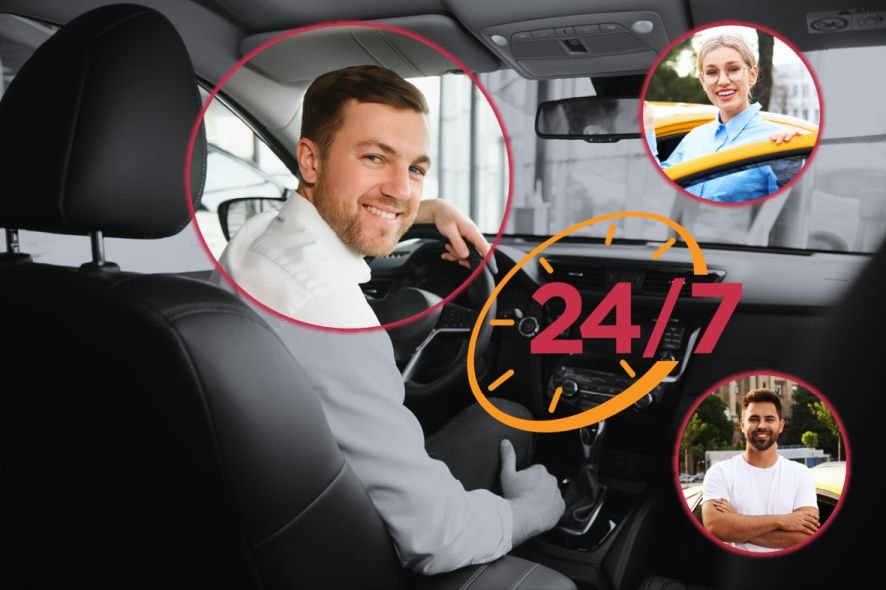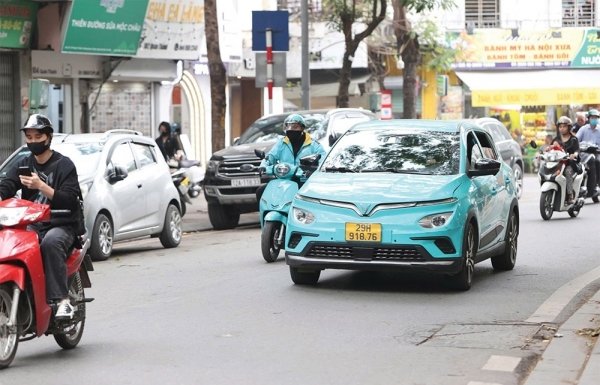Ride & Mobility
How New Bike-taxi Guidelines Can Solve India’s Urban Mobility Crisis

By: Rahul Chakraborty, Shiv Nadar University, Delhi NCR.
In a significant policy shift, India’s Ministry of Road Transport and Highways has issued the Motor Vehicles Aggregator Guidelines 2025 which for the first time formally permits private bikes to be used as bike-taxis through aggregators within the ambit of the Motor Vehicles Act (MVA).
These guidelines mark a turning point for the country’s urban mobility ecosystem. They lay the legal foundation for ‘flexible mobility solutions’ by outlining procedures for compliance, fare setting, passenger safety and penalties for ride cancellations. They also provide a model for state governments to follow in allowing and regulating bike-taxi operations within their jurisdictions.
The guidelines came soon after the Karnataka High Court banned bike-taxis in the state, pending the adoption of regulatory guidelines in line with the MVA. The ban in Karnataka, effective from June 16, 2025, sparked public debate and pushback from key stakeholders. Many users and operators have sought to circumvent the ruling by relying on informal arrangements such as WhatsApp messages to offer and access services, highlighting the persistent demand for bike-taxis despite regulatory uncertainty.
Bans such as those in Karnataka not only restrict passenger mobility in dense urban regions, but also risk undermining India’s broader climate and transport goals. The new national guidelines are therefore a welcome step towards promoting greener, more efficient urban transport.
In the current technological and cost environment, the two-wheeler segment is among the easiest to electrify. Their lightweight design, lower battery requirements and simpler charging infrastructure make electric two-wheelers a practical solution for sustainable mobility.
If state governments adopt the new central guidelines and supplement them with mandates for electric vehicle targets within aggregator fleets, this could substantially support India’s emission reduction goals. It would also encourage more individuals offering bike-taxi services to shift towards electric options.
The concept of using motorcycles to ferry passengers —commonly known as bike-taxis—is well established in many developing countries, especially across Southeast Asia.
In India, Goa pioneered the model in 1981, becoming the first state to legalise bike-taxis. Since then, 21 states and union territories have introduced their own guidelines to permit private bikes for commercial rides. However, the uptake has been uneven, and operations remain fraught with regulatory and political hurdles.
In recent years, Delhi has banned bike-taxi services. On the other hand, Maharashtra has introduced draft regulations to allow them, but will only permit electric bikes.
India is the world’s largest two-wheeler market. A total of over 292.2 million two-wheelers are registered for private use but only 1.46 lakhs for hire.
More jams ahead
While major metropolitan areas offer a mix of public transport modes, the overall quality, efficiency and reliability of services remains patchy.
This gap in dependable public transit has led to an urban mobility crisis and a growing reliance on informal and shared transport solutions such as mini-buses, ride-hailing apps and bike-taxis. However, these alternatives still fall short of meeting the rising demand.
At the same time, rising incomes have accelerated the purchase of personal vehicles, even in rural areas. Still, ownership remains far from saturation; 54 percent of Indian households own a two-wheeler and only eight percent own a four-wheeler. However, the numbers are expected to grow rapidly with economic growth and rising aspirations.
The increase in vehicular traffic will further jam the already congested roads in Indian cities.
Across the country, cities already suffer from shrinking road space, encroachments and unplanned urban growth. Traffic congestion continues to worsen, with significant time lost in transit. Two-wheelers and cars together account for about 95 percent of India’s motorised vehicle fleet, with two-wheelers making up approximately 75 percent.
This gap may narrow as car ownership grows. But more cars will only add to both traffic congestion and vehicular pollution. Two-wheelers, however, occupy less road space and have a much smaller carbon footprint.
A recent estimate from Delhi shows that the carbon dioxide intensity per passenger-kilometre for two-wheelers is about 41 grams—less than half that of cars and roughly 35 percent lower than that of three-wheelers.
Encouraging the use of private bikes for commercial purposes within a regulated framework that emphasises electrification and safety could be a vital component of India’s transition towards more sustainable urban transport. It also offers a pragmatic solution for addressing the limitations of current infrastructure and services.
Reforms needed
Amid this shifting landscape, auto-rickshaws and bike-taxis have become indispensable as intermediate public transport, particularly for first and last-mile connectivity in densely populated cities. In 2023 alone, around 318 million bike-taxi rides were estimated to have taken place across India.
Beyond convenience, bike-taxi operations offer an income lifeline to individuals in India’s low and lower-middle-income segments, especially those who already own two-wheelers. The model also creates employment opportunities for gig workers via commercial ride-hailing agreements.
Despite their popularity and economic relevance, bike-taxis are often flagged for safety concerns. Critics also point to incidents of unsafe driving and the absence of robust insurance coverage. Resistance has come from traditional taxi and auto-rickshaw unions, who view bike-taxis as a threat to their livelihood.
This opposition—combined with the absence of clear regulatory frameworks—has prompted bans or restrictions in several regions. But such blanket prohibitions raise serious questions. Without viable alternatives in place, bans risk increasing the cost of travel, especially for low-income commuters. Former users may be compelled to buy personal vehicles, contributing to congestion, emissions and inefficient use of urban space.
Prohibiting bike-taxis without simultaneously strengthening public and shared transport services risks pushing cities into an ‘unsustainable mobility trap’ marked by underutilised vehicles, higher per capita emissions and worsening traffic delays.
Public aggregators to the rescue
A state-owned or cooperative aggregator model could improve transparency in fare setting and commissions, easing tensions between drivers and operators.
Fixed commission structures, as opposed to fluctuating rates commonly used by private aggregators, can help build trust and ensure fairer earnings. Public aggregators are also better placed to avoid predatory pricing and the unpredictability of surge fares, offering passengers more stable and affordable travel costs.
Such platforms also allow governments to regulate service quality, enforce safety standards, and generate public revenue through modest commissions—funds that could be reinvested into public transport infrastructure and services.
Some state governments are already experimenting with public aggregator models. The West Bengal government launched the Yatri Sathi app in 2023, offering a zero-commission, direct-to-driver taxi platform. It has been generally well received by both drivers and passengers as an alternative to private aggregators. Kerala’s government-backed app, Kerala Savaari, and Goa’s GoaMiles follow a similar approach.
At the national level, the central government announced in March 2025 that it would launch a taxi-service cooperative called Sahakar Taxi. This app-based cooperative ride-hailing platform will support two, three and four-wheelers. In 2024, Assam became the first Indian state to launch a dedicated, app-based all-electric bike-taxi and delivery service—Baayu—under a government-owned model where the bikes are leased to driver-partners.
The legal recognition of bike-taxis is a reform that acknowledges the evolving realities of urban India. In a context where cities are grappling with worsening congestion and mounting emissions, banning ‘flexible mobility solutions’ is a regressive move. Instead, regulators should view them as part of the solution.
With the central government’s framework in place, the onus is now on states to implement it responsibly to unlock the full potential of shared two-wheeler mobility.
Originally published under Creative Commons by 360info™.
*) DISCLAIMER
Articles published in the “Your Views & Stories” section of en.tempo.co website are personal opinions written by third parties, and cannot be related or attributed to en.tempo.co’s official stance.
Ride & Mobility
A Strategic Bet on Autonomous Vehicles and Long-Term Growth

The global mobility landscape is undergoing a seismic shift. As the world edges closer to a driverless future, companies that can bridge the gap between innovation and scalability will dominate the next decade. Uber, once synonymous with surge pricing and urban chaos, has quietly repositioned itself as a formidable player in the autonomous vehicle (AV) revolution. With a strategic web of partnerships, a robust balance sheet, and a vision to own the mobility operating system of the future, Uber is not just adapting to change—it is accelerating it. For investors, the question is no longer whether Uber can survive in this new era, but whether it can outpace its rivals and deliver outsized returns.
Strategic Partnerships: The Building Blocks of a Robotaxi Empire
Uber’s recent alliances in the AV space are nothing short of transformative. By teaming up with Lucid Group and Nuro, the company has secured access to both the hardware and software needed to build a scalable robotaxi network. Lucid’s Gravity SUV, with its 450-mile range and modular design, is tailor-made for autonomous operations. Nuro’s Level 4 AI-driven autonomy system, already tested in Las Vegas, promises efficiency and safety. Together, these partners enable Uber to deploy 20,000 vehicles over six years—starting in a major U.S. city by 2026. This is not just a partnership; it is a blueprint for vertical integration, where Uber owns the vehicle, the technology, and the user experience.
Beyond the U.S., Uber has expanded its AV footprint with Baidu’s Apollo Go and WeRide, targeting Asia, the Middle East, and Europe. These partnerships are critical for global diversification. Apollo Go’s 1,000+ driverless vehicles in Dubai and Abu Dhabi, and WeRide’s planned expansion to 15 new cities, underscore Uber’s ambition to become the default AV platform outside of China. Meanwhile, May Mobility’s Toyota Sienna-based AVs, set to launch in Texas, provide a bridge to U.S. markets where regulatory hurdles remain. By hedging its bets across geographies and technologies, Uber is insulating itself from regional disruptions while building a universal mobility solution.
Financial Strength: The Engine of Long-Term Bet
Uber’s financials in 2025 tell a story of resilience and reinvention. Q1 revenue hit $11.5 billion, up 14% year-over-year, with free cash flow surging to $2.3 billion. This performance is not just a function of ride-hailing growth but also of disciplined cost management and diversification into delivery, advertising, and Uber One subscriptions. The company’s Q2 guidance—Gross Bookings of $45.75–47.25 billion and Adjusted EBITDA of $2.02–2.12 billion—further reinforces its momentum.
Critically, Uber’s free cash flow generation provides the runway to fund its AV ambitions without resorting to dilutive financing. The $300 million investment in Lucid and the multi-hundred-million-dollar stake in Nuro are not speculative bets but strategic allocations to secure a leadership position in a market projected to reach $1.3 trillion by 2030. For context, Tesla’s recent stock volatility (
Network Effects and First-Mover Advantage
Uber’s core strength lies in its network effects. With 170 million monthly active platform consumers and 3.0 billion trips in Q1 2025, the company has amassed a trove of data on routing, pricing, and user behavior. This data is now being repurposed to train its AV systems and optimize robotaxi operations. Unlike legacy automakers or pure-play tech firms, Uber has the unique advantage of testing its AV fleet in real-world conditions while maintaining a revenue stream from its existing business.
Moreover, the integration of AVs into the Uber app—where users can seamlessly switch between human-driven and autonomous vehicles—creates a flywheel effect. As robotaxi costs decline, Uber can undercut traditional ride-hailing services, attracting more users and further entrenching its platform. This dynamic is already visible in Dubai, where Apollo Go’s 11 million public rides demonstrate the viability of AVs in a ride-hailing context.
Risks and Realities
No investment is without risk. Regulatory delays, technical hurdles, and competition from Waymo, Tesla, and Chinese AV firms like Baidu and WeRide remain significant challenges. Additionally, Uber’s Q2 2025 guidance assumes a 1.5% currency headwind, which could pressure margins if global economic conditions deteriorate.
However, Uber’s diversified strategy—owning both AV assets and partnerships, while maintaining a strong core business—mitigates many of these risks. Its ability to pivot from platform-as-a-service to owner-operator also reduces exposure to third-party bottlenecks. For investors, the key is to assess whether the company’s current valuation reflects these strategic advantages or still trades at a discount to its long-term potential.
Conclusion: A Compelling Case for Long-Term Investors
Uber is no longer just a ride-hailing company; it is a mobility infrastructure play. Its AV partnerships, financial durability, and network effects position it as a prime candidate to dominate the robotaxi market. While the path to profitability may be nonlinear, the company’s disciplined capital allocation and global expansion make it a compelling buy for investors with a multi-year horizon.
For those willing to bet on the future of mobility, Uber offers a rare combination of innovation and execution. As the world moves toward autonomous transportation, Uber’s ability to own the user experience—from app to vehicle—will be its greatest asset. The question for investors is not whether Uber can succeed, but whether it can do so faster than its rivals. In a race where the finish line is a driverless future, Uber has already secured a front-row seat.
Ride & Mobility
flinkey supercharges Ride-Hailing Operations with Digital Vehicle Access Solution

flinkey supercharges Ride-Hailing Operations with Digital Vehicle Access Solution
Mounting-free retrofit technology helps providers boost fleet efficiency, enhance driver experience, and reduce downtime
With flinkey, operators can eliminate lengthy handovers, streamline day-to-day vehicle operations, and provide a smoother user experience.
VELBERT, GERMANY, July 25, 2025 /24-7PressRelease/ — In today’s rapidly evolving ride-hailing industry, flinkey – developed by WITTE:digital – offers a mounting-free, digital keyless access solution designed to help operators overcome common hurdles such as manual key handovers and limited vehicle availability. Through a discreet in-vehicle key box and an intuitive mobile app, ride-hailing providers can substantially reduce administrative overhead, improve driver convenience, and optimize fleet performance.
flinkey adds new approach to ride-hailing vehicle access
Currently, many ride-hailing operators rely on time-consuming key handovers, scheduling constraints, and face-to-face interactions. These processes can slow down vehicle allocation, restrict 24/7 access, and drive up costs. By contrast, flinkey enables a fully digital approach to vehicle handovers-keys are accessed and returned virtually, and the physical key is secured in the car. This process allows operators to dynamically manage fleets across multiple locations without sacrificing flexibility or security.
“We see a significant increase of requests and implementations by ride-hailing providers. All of them eager to adopt digital vehicle keys for a faster expansion of their business,” states Annika Sänger-Acevedo, Director Sales & Business Development at WITTE:digital.
Tangible benefits for ride-hailing providers
Operators report the following advantages:
• Administrative work reduces as digital handovers minimize paperwork and staff time by replacing cumbersome, face-to-face processes.
• Enabling drivers to unlock and return vehicles anytime via a mobile app opens up for expanded operational windows, 24/7 fleet availability and increased revenue potential.
• User satisfaction improves since contactless key management eliminates waiting times, empowers drivers to pick up vehicles at their convenience, and enhances the overall service quality.
• Centralised control and real-time insights are possible thanks to detailed logging of vehicle access
• The retrofit-friendly and mounting-free solution enables scalability at maximum ease of installation allowing immediate fleet expansion.
Michael Tüllmann, Head of WITTE:digital invites fleet managers to benefit from fewer delays and better resource allocation: “We believe the future of ride-hailing lies in fast, driver-friendly fleet access. With flinkey, operators can eliminate lengthy handovers, streamline day-to-day vehicle operations, and provide a smoother user experience.”
WITTE:digital is the digital business unit of the WITTE Automotive Group, headquartered in Velbert, Germany. As an innovation driver for digital vehicle access, WITTE:digital develops holistic solutions for car sharing, fleet management and mobility platforms. One of its key products in the car rental, sharing / pooling and ride-hailing space is the aftermarket solution flinkey enabling digital vehicle keys.
The vision ‘WE OPEN MOBILITY’ stands for safe, efficient and sustainable access to mobility – digital and connected.
# # #
Ride & Mobility
Ride-hailing platforms shift gears in green mobility race

| Ride-hailing players in Vietnam are launching initiatives to encourage the switch to electric vehicles, Le Toan |
Last week, the Ho Chi Minh City Institute for Development Studies (HIDS) submitted a proposal to the city’s People’s Committee, supporting the city’s strategic ambition of achieving net-zero emissions and advancing transport electrification.
Le Thanh Hai, director of the Centre for Applied Economic Consulting at HIDS, revealed that Ho Chi Minh City had approximately 400,000 ride-hailing two-wheelers in operation as of late 2024. These vehicles, including passenger and delivery motorbikes, are among the highest individual emitters in the urban transport sector.
HIDS survey data showed that a typical ride-hailing driver in the city travels 80-120km per day, up to four times more than the average motorbike user. Therefore, transitioning one petrol-powered vehicle used to electric has a significantly higher environmental impact compared to regular private users.
“We chose the ride-hailing and delivery segment because it contributes the most emissions per vehicle. Addressing this group means tackling the core of the two-wheeled emission problem,” Hai said.
The conversation is also matched with the trend in the Southeast Asia. In recent years, ride-hailing platforms have actively adopted electric vehicles (EVs). In 2024, Grab announced plans to add 1,000 EVs in Indonesia, most of which will come from BYD.
Meanwhile, Grab’s rival GoJek is focusing on the two-wheeler market and plans to convert its entire fleet to electric motorcycles by 2030, even establishing a joint venture to manufacture them. In late 2024, Vingroup launched an electric taxi service in Indonesia, leveraging its advantage as an EV manufacturer to expand its presence in Southeast Asia.
According to HIDS, the city’s air quality has seen slight improvement over the past two years, partially thanks to the growing presence of GSM’s electric motorbikes, which now account for around 40 per cent of Ho Chi Minh City’s ride-hailing market.
The proposal suggests rolling out the conversion plan from 2026, with attractive incentives to encourage drivers to shift to EVs. The roadmap includes a complete phase-out of gasoline-powered two-wheelers on ride-hailing platforms within five years.
“Electricity costs around 80 per cent less per kilometre than petrol, and EVs require less maintenance. On average, a driver could save $40-50 per month, an important margin given their typical earnings,” Hai noted.
While Ho Chi Minh City is assessing the feasibility of its plan, Hanoi has already begun preparing for its transition.
Starting July 2026, the capital will ban fossil-fuelled motorbikes within its inner Ring Road 1. The ban is expected to gradually expand to other ring roads
The assertive moves from Vietnam’s two largest markets have triggered a nationwide response from leading ride-hailing players. Grab, Xanh SM, and Be Group, currently commanding a combined 87 per cent of the national ride-hailing market, are all accelerating their green transition strategies.
Under a programme launched in May and running through to August 19, Grab and BYD Vietnam are offering promotions to encourage drivers to switch from fuel-powered vehicles to EVs.
Perks include a guaranteed income of up to $1,000 per month for GrabCar Plus drivers, and an eight-year or 500,000-km battery warranty. The initiative highlights the BYD M6 – an electric MPV with an estimated on-road price of around $30,000 – as a recommended model for Grab drivers.
The companies say the partnership is aimed at modernising ride-hailing with quieter, more environmentally friendly vehicles, in line with growing consumer demand for premium and sustainable transport.
“This collaboration seeks to redefine ride-hailing through advanced technology and luxury comfort,” said Ouyang Xiaocheng, CEO of BYD Vietnam.
The strategy in Vietnam is a part of the regional partnership, signed in January, between Grab and BYD, China’s largest EV company, to provide Grab drivers across Southeast Asia with the right to purchase 50,000 BYD EVs at the best price.
Vietnam currently has more than 20 active ride-hailing applications, but the majority of traffic and users are concentrated on a few dominant players, according to the Ministry of Construction.
According to a Q1 report from Mordor Intelligence, Vietnam’s ride-hailing market is valued at approximately $1 billion and is forecast to reach $2.55 billion by 2030, reflecting a compound annual growth rate of 19.5 per cent between 2025 and 2033.
GSM is currently leading both the traditional taxi and app-based ride-hailing segments in Vietnam, commanding a 40 per cent market share and generating an estimated $400 million in revenue. Close behind is Grab with a 36 per cent share, while Be ranks third with just 6 per cent.
The EV segment is set to lead this expansion. Mordor Intelligence estimates a compound annual growth rate of around 45 per cent between 2024 and 2029 for EVs in Vietnam, far outpacing petrol and diesel-powered vehicle segments.
| Capital’s e-motorbike market to surge amid looming ban
A proposal to ban petrol-powered motorbikes in inner Hanoi is expected to boost demand for electric motorbikes, but concerns remain around charging infrastructure and the need for a broader product range. |
-

 Brand Stories6 days ago
Brand Stories6 days agoBloom Hotels: A Modern Vision of Hospitality Redefining Travel
-

 Brand Stories1 day ago
Brand Stories1 day agoCheQin.ai sets a new standard for hotel booking with its AI capabilities: empowering travellers to bargain, choose the best, and book with clarity.
-

 Destinations & Things To Do7 days ago
Destinations & Things To Do7 days agoUntouched Destinations: Stunning Hidden Gems You Must Visit
-

 AI in Travel7 days ago
AI in Travel7 days agoAI Travel Revolution: Must-Have Guide to the Best Experience
-

 Brand Stories3 weeks ago
Brand Stories3 weeks agoVoice AI Startup ElevenLabs Plans to Add Hubs Around the World
-

 Brand Stories2 weeks ago
Brand Stories2 weeks agoHow Elon Musk’s rogue Grok chatbot became a cautionary AI tale
-

 Destinations & Things To Do1 day ago
Destinations & Things To Do1 day agoThis Hidden Beach in India Glows at Night-But Only in One Secret Season
-

 Asia Travel Pulse3 weeks ago
Asia Travel Pulse3 weeks agoLooking For Adventure In Asia? Here Are 7 Epic Destinations You Need To Experience At Least Once – Zee News
-

 AI in Travel3 weeks ago
AI in Travel3 weeks ago‘Will AI take my job?’ A trip to a Beijing fortune-telling bar to see what lies ahead | China
-

 Brand Stories3 weeks ago
Brand Stories3 weeks agoChatGPT — the last of the great romantics









You must be logged in to post a comment Login